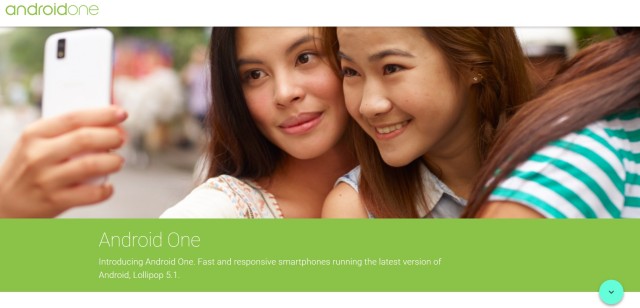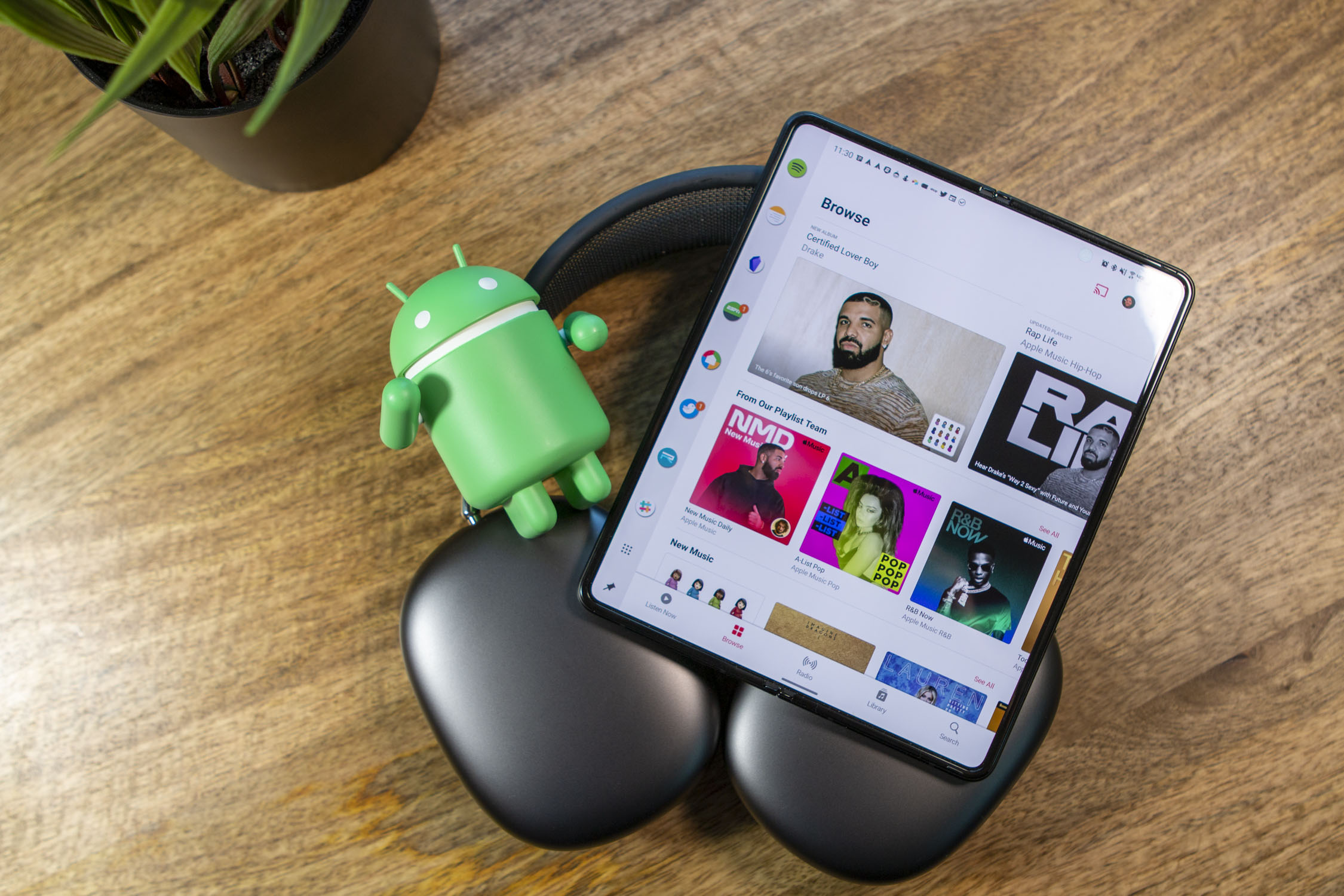Google made Android One to get phones into “the next 1 billion” people’s hands, but that plan seems to be a lot harder than it sounds on paper. The company’s vice president of product management Caesar Sengupta spoke with the Economic Times following reports that Android One smartphones have sold less than 1 million units in India combined since its September launch.
The number is alarming considering India was the biggest target market for Android One and there’s a wide variety of affordable options available. So what’s the issue?
Google believes they didn’t effectively hurdle the distribution obstacles, noting that the devices weren’t readily available in all mainstream channels. Whether that be featuring Android One prominently throughout electronics stores, making the devices available from an easy online source or making sure every carrier had Android One phones to offer, Google feels they have to tackle that problem if they really want the program to take off.
Another issue is increased competition. OEMs are starting to introduce powerful smartphones at very affordable price points, and people will just as soon spend the extra money to get a phone that could potentially go a lot further than an Android One phone could. Sengupta also pointed to a study that showed smartphone buyers going from their first to second phone are more inclined to go with something more expensive, likely due to the eventual realization that ultra-affordable smartphones are too limited for modern usage.
Despite the struggles, Google is reluctant to pull the plug on it. The company reiterates that Android One is now in 7 different countries with options from dozens of manufacturers, with more coming along the way (including some options from known names like ASUS and HTC).
They also mention Android One is less about volume and more about the idea of pushing affordable, yet capable smartphones. That’s not unlike the way they do business on the high-end side of the scale with the Nexus line, so Google would like to think they’re on their way to achieving their goal even without the gaudy numbers to back it up.












Wait, what? I thought they just wanted users to have phones, regardless of how high-end the device was? Hmm…
I don’t think that changes – Google wants everyone to have a platform for their services.
The Android One seems to be trying to provide an “affordable, yet capable” smartphone to the masses.
What does capable mean?
It means supportable and updateable – not just a locked down ripoff that leaves users confused and hurt.
Once upon a time Android was small and the makers kept screwing up important things, and saying that’s what technology allowed.
Google said baloney, here’s how you do, we’ll demonstrate with a developer phone that we’ll just build once – the first Nexus.
I can tell you what comments I’ve read over and over since –
I wish XYZ would make a Nexus.
I know that my Nexus isn’t state of the art hardware, I just want a supported phone.
The Nexus needs to be affordable, they’re going in the wrong direction with the best hardware.
Sound familiar?
OK – Android One.
And the Nexus is free to continue as a premium phone.
Once upon a time Android was small and the makers kept screwing up important things, and saying that’s what technology allowed.
Now android is big and Google keeps screwing things up. Progress! Gotta love it.
That’s the history of all tech – the pluses have to outweigh the screw-ups and we call it progress.
It’s not a perfect world.
Someone once accused Edison of failing 99 times before getting the light bulb.
He replied that that wasn’t so, he now knew 99 ways on how to not make a light bulb.
Android One and Nexus Line of Phones from Google are the BEST WAY to reduce fragmentation problem in Android over the Long Term . How many agree to this point?
I agree but I would agree more if Google had a better way to update their phones.
Right now their update system of this phone gets the new update, and now that phone, a month later one variant of a tablet gets an update is frustrating at best. They need to organize their updates better.
Right! That can be done only if Google is given the opportunity to own the majority of the OS Software Stack and the Hardware Vendors focus on you know… Innovation in Hardware and possibly Differentiating Apps. Right now, Nexus and Android One line of phones rightly fit into this strategy and Google will need to focus on better marketing, distribution strategy and developer community support for these line of phones to gain market share!
Android One and Nexus combined don’t have enough market share to make much of the difference in fragmentation. Fragmentation is a red herring anyways, it’s a non-problem.
Fragmentation IS A REAL problem! The fact is Android L was released late last year and most of the Android phones don’t have it! ALL the Android One phones and Nexus Phones have the latest Lollipop OS Release Updated. They run on 5.1.1! Now imagine the case even with Motorola which is known for pushing updates way faster than other H/W vendors! Well, you can always talk about Custom ROMs – but you know! that’s really Red Herring stuff.. This ROM is subject to warranty void risks, please read the installation instructions and known issues carefully before bricking your device and breaking your head to unbrick it.
You don’t need to be running the latest version of Android to get most of the new features, they get delivered through updates to the Play Services app and the Google app via the Play Store. There are very, very few apps that require 5.x. The only real fragmentation is devices still running Android 2.x, and those are dwindling down to nothing anyways.
You’re not missing anything if your device is still running 4.3 or 4.4.
C’mon.. You do get to miss most of the updates that are made as part of the core release. For example, we don’t have the Battery Saver feature that’s there in Android L natively made available in Kitkat. The transitions in Lollipop are way smoother compared to ones in KitKat. And Android M claims to have features like Doze which I do not expect to see being made available in the earlier versions. You may claim these are available through Custom Apps – you have a custom app for this and that.. But something that’s built as part of the OS is more reliable.
I do not buy this perspective of comparing devices with Play Services Updates. If that’s the case, Google should just stop releasing Android Versions named after Desserts and probably adopt that strategy for just releasing newer versions of Play Services Updates.
I have devices that run Honeycomb, Kitkat as well as Lollipop and I can say for sure – the OS release does make a real difference in terms of User Experience!
You’re listing user features, not features that would cause fragmentation. Fragmentation is when differences in Android versions (or devices) causes issues for app developers. Having or not having Battery Saver mode will not cause any headaches for developers at all.
What you’re describing is no different than iOS. Older iPhones may get the latest version iOS, but they don’t necessary support all the new features.
it is failing because google is the worst company in the history of mankind at successfully marketing their products
This sounds just like the awful availability of Nexus. I tried to get one once, but gave up after the frustrating fiasco of their website.
Just Google as usual.
They are too late for the party. Moto e has already taken the market.
Tizen is killing it yet a cheap Nexus gets no love?